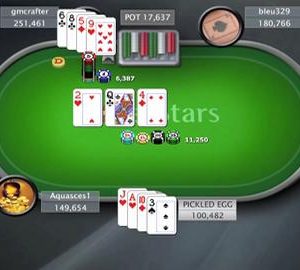Strategy Differences Between Omaha and Omaha Hi-Lo – Part 1

Omaha High and Omaha Hi-Lo have different strategies and sometimes players find it difficult to adjust between the two games. Some strategies that work well in Pot Limit Omaha will spell disaster in Omaha 8 or Better, and vice versa.
Today we will begin a two-part series covering some basic strategy differences between the two-game to give you a basic foundation in both poker games.
Hand Selection
When thinking hand selection between Omaha High and Omaha Hi-Lo, remember the difference between the two games. Pot Limit Omaha is a game of big cards and big draws and the objective to Omaha Hi-Lo is to scoop the pot.
In PLO, you are looking for hand combinations that work well together. Big wrap hand, double suited hands, or hands with multiple drawing combinations are the hands you are primarily shooting for.
ICYMI: Jeff Madsen talks starting hand selection, position strategy in pot limit Omaha hi-low http://t.co/pf4X6K0jKg
— Poker Central (@PokerCentral) June 21, 2015
For Omaha 8 or Better, you are looking for four cards that give you the best chance to scoop the pot. Due to the nature of the game, if you are not drawing to the nuts, you are going to bleed off money. Also, big wraps do not play as they do in PLO.
You are looking for hands that give you the best chance to win both the high and low halves of the pot. Suited hands such as A-2-3-K, A-2-K-Q, A-2-3-4, and others offer the best chance to scoop. Hands like 7-8-9-10, K-Q-J-10, and others are one-way hands at best and when you are regularly playing for just one half of the pot, you will lose.
Bluffing
Bluffing in Pot Limit Omaha is going to depend on the relative strength of the board and what draws have or have not completed on the board. When it is clear your opponent is drawing to a particular straight or flush and missed, you have a chance to bluff them out of the pot. When the board pairs and your opponent looks to be drawing, this can present an opportunity to bluff to convince them you just filled up.
Omaha Week – Bluffing – Bluffing in Omaha https://t.co/efB0ft9bKg #poker #omaha pic.twitter.com/FhTUlyc3F8
— John Bowman ♠ (@JohnBowmanJB) July 27, 2016
In Omaha Hi-Lo, bluffing is also dependent on the board, but the added element of low draws can help you pick bluffing spots. For example, when the board flops high, meaning either zero or one low card, a player can represent a high hand as a bluff.
When the board fails to complete a low draw on the river, again a player can bluff into the board to chase out players going for low. A paired board can also present bluffing opportunities against smarter players. A player chasing a straight or a low may be more inclined to get out after the board pairs and someone fires out.
Draws
Drawing in Omaha High is different than drawing in Omaha Hi-Lo. In Omaha, it is often correct to put a lot of money into the pot or even call an all-in bet when you are on a huge draw. An example is a nut straight draw with a flush redraw or a set with a straight and flush redraw.
In Omaha Hi-Lo, how you draw will depend on what you are drawing to and even whether you are drawing to the nuts. It is often wrong to draw to anything other than the nuts if you are drawing for half of the pot. Also, if you are drawing for low it is often wrong to chase down a draw in a multi-way pot unless you also have a shot at scooping.
The reason behind this is that when you are drawing for just low in a multi-way pot, you risk the chance of being quartered. While that risk is there for heads-up pots, it is usually much reduced over the odds of being quartered in a multi-way pot.
Come back next week to learn more differences between Omaha and Omaha Hi-Lo.
